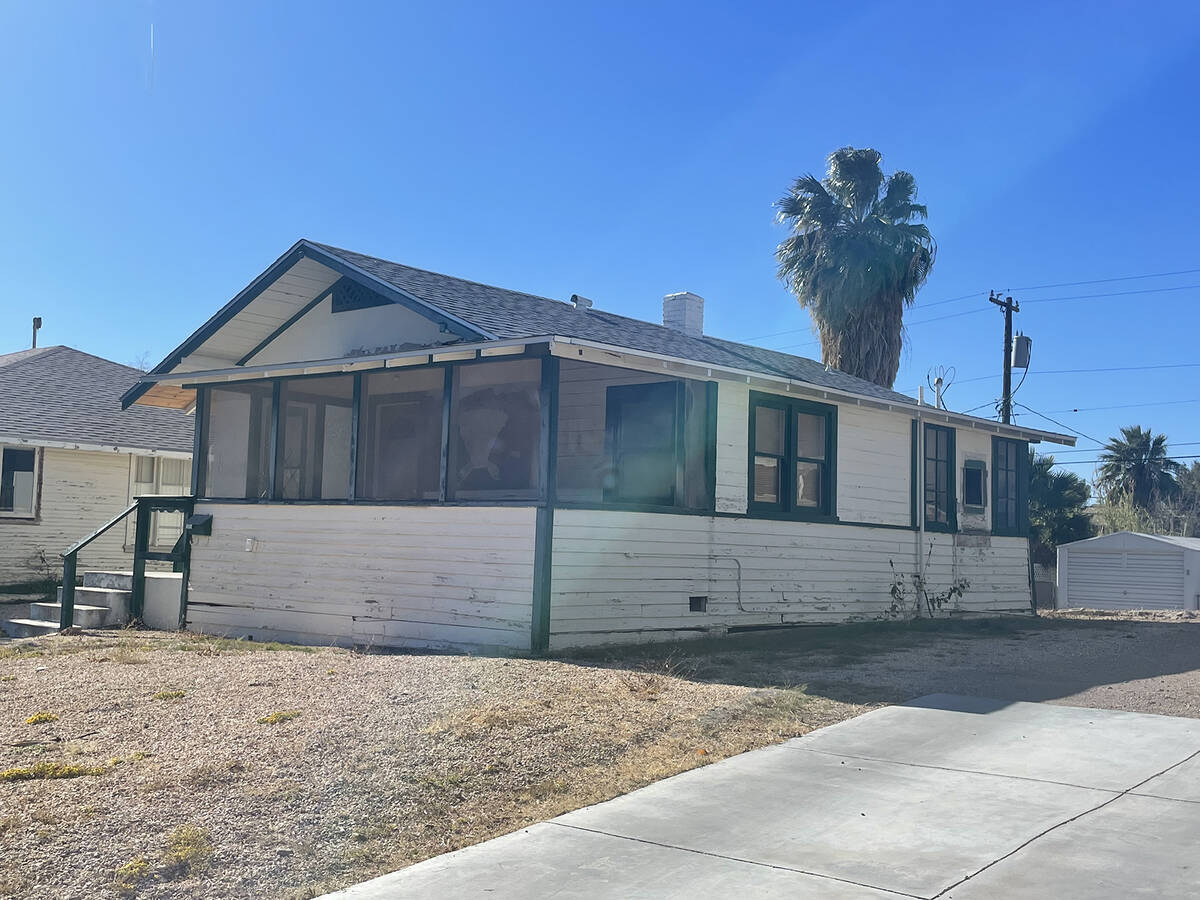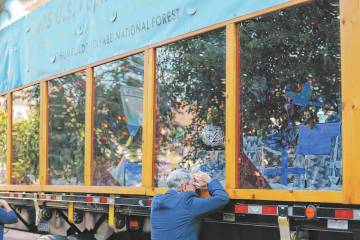Yapp: ‘Nothing more green than restoring’
Boulder City has a large core of historic buildings and homes, many built close to a century ago and, as owners have set out to restore some of these structures, some of the challenges have been unexpected.
In a fair number of cases, one of those challenges has been windows.
While there are plenty of refurbished historic homes where the owners have opted for more modern and energy-efficient windows (replacing the historic wooden frames, often with vinyl) those looking for a more historically appropriate end result have run into something of a Catch-22. It appears that there are no window companies in Boulder City or even in the greater Las Vegas metropolitan area with the training and expertise to fully repair 100-year-old window frames.
This became an issue with one specific property. The house, located at 640 Avenue C, is owned by the Boulder City Museum and Historical Association, which has a goal to fully restore the building to its original 1931 condition using period-appropriate construction methods and materials.
So, if one needs something built but no one in the area knows how to do it, there are two choices: First and easiest in the short-term, hire a craftsperson from outside the area who has the appropriate expertise to do the job. The second option is harder and takes longer but ensures the expertise exists locally to do the work in the future. Under that option, you start by building a school.
While there is not going to be a new school built just for teaching historic preservation methods in construction, the city is using a state-provided grant to hire an expert in window restoration and repair to come into town and teach local craftspeople how to do the work.
Community Development Director Michael Mays explained that Boulder City is recognized by the Nevada State Historical Preservation Office (SHPO) as a Certified Local Government that may be eligible for certain grant programs.
“In response to this year’s grant program, the city submitted a grant for $16,600, that was approved by SHPO,” Mays said. “Both Boulder City and the City of Las Vegas have heard from property owners that want to restore windows in historic properties but cannot find contractors that are knowledgeable in the trade. The grant would help fund a three-day workshop for 12 students in May 2024 that would be led by Bob Yapp with Preservation Resources, Inc. The workshop would be a hands-on training to restore six windows in a historically significant building.”
The building is the house on Avenue C and Yapp is an expert on historical preservation who hosted a TV show on PBS in the late 1990s called “About Your House with Bob Yapp” that reached about five million viewers a week over it’s five-year run.
In 2000, Yapp began doing hands-on preservation workshops and consulting. Today, he and his wife, Pat, operate the Belvedere School for Hands-On Preservation and the Belvedere Inn on the banks of the Mississippi River in Hannibal, Mo., a town best known as the hometown of American literature icon Mark Twain.
Yapp explained what the 12 attendees of the workshop can expect.
“I come in with my apprentice and we bring an entire shop with us,” he said in a phone interview with the Review. “We’ll set it all up at that property and then break everyone into teams of two and each team of two people is responsible for one complete window opening. And we get busy and show people how to do it by actually doing it.”
Yapp likens himself to something along the lines of an old-time circuit rider. In the 19th century, there might have been just one judge or sheriff or doctor who served a huge geographical area and who rode a circuit, spending some time in each town or outpost along the way.
“I’m like that but I’m the preservation guy,” he said. “We go on the road and we teach masonry, floor restoration, window restoration, we do a lot of things, but window restoration seems to be a big issue for a lot of communities.”
With a lifetime spent doing restoration, Yapp has seen a restoration movement develop. A movement that he describes as extremely diverse in terms of finances, education, culture and even politics. He also says that the restoration movement pretty much drove the modern environmental movement.
“There is nothing more green than restoring an old building and saving it from the landfill,” he said.












